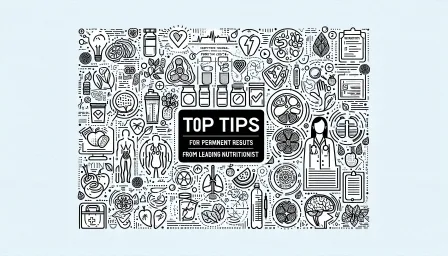How to Follow a Low-Carb Diet on a Budget: Tips and Tricks

Discover practical tips and tricks on how to follow a low-carb diet on a budget. Learn how to save money while eating healthy and maintaining your low-carb goals.
Following a low-carb diet can be an effective way to improve your health and manage your weight. However, it's often perceived as expensive due to the cost of fresh produce, meat, and specialty low-carb products. For those looking to maintain a low-carb diet without breaking the bank, there are several strategies you can employ to save money while still eating healthily.
Understanding the Basics of a Low-Carb Diet
A low-carb diet typically involves reducing your intake of carbohydrates and increasing your consumption of protein and fats. Common foods include vegetables, meats, eggs, and healthy fats like olive oil. While many people associate low-carb diets with costly ingredients, you can achieve your dietary goals economically with careful planning and smart shopping.
Plan Your Meals and Shop Smartly
Create a Weekly Meal Plan
One of the best ways to follow a low-carb diet on a budget is to create a detailed meal plan each week. This not only helps you adhere to your low-carb goals but also prevents impulse buying and food waste. Write down your breakfast, lunch, dinner, and snack ideas, focusing on ingredients that are economical and versatile.
Make a Shopping List and Stick to It
Arming yourself with a shopping list based on your meal plan can help you avoid unnecessary purchases. Stick to the list to prevent impulse buys that can blow your budget. Consider grouping your list by categories such as vegetables, proteins, and fats to make your shopping trip more efficient.
Buy in Bulk and Utilize Sales
Shop in Bulk
Buying in bulk can save you significant money, especially on non-perishable items like nuts, seeds, and olive oil. Additionally, consider purchasing larger quantities of meat and freezing portions to use over time. Bulk buying reduces the cost per unit, allowing you to get more value for your money.
Take Advantage of Sales and Discounts
Keep an eye out for sales and discounts at your local grocery stores. Sign up for memberships at bulk stores or discount clubs to access special deals. Using coupons and loyalty programs can also add up to substantial savings over time.
Opt for Cost-Effective Low-Carb Foods
Choose Affordable Protein Sources
Protein is a staple of the low-carb diet, but it doesn't have to be expensive. Consider budget-friendly protein sources such as ground beef, chicken thighs, canned tuna, and eggs. These items are often cheaper and just as nutritious as their more expensive counterparts.
Incorporate Seasonal Vegetables
Vegetables are essential for a balanced low-carb diet and can be affordable when you choose seasonal options. Seasonal vegetables are often fresher, more nutritious, and less expensive. Check local farmers' markets for great deals on seasonal produce.
Prepare and Cook at Home
Cook Large Batches
Cooking large batches of food can save you both time and money. Prepare big portions of low-carb dishes like soups, stews, or casseroles, and store them in the fridge or freezer for quick, budget-friendly meals throughout the week. This reduces the temptation to buy costly takeout or convenience foods.
Embrace Simple Dishes
Sticking to simple dishes that require fewer ingredients can help keep costs down. For example, a meal with grilled chicken, sautéed vegetables, and a green salad is nutritionally balanced and relatively inexpensive. Utilize spices and herbs to keep your meals flavorful without adding extra cost.
Reduce Waste and Maximize Ingredients
Use Every Part of the Food
Maximize your ingredients by using every part of the food you buy. For example, use vegetable scraps to make homemade broth, or repurpose leftovers into new dishes. Be creative in the kitchen to minimize waste and get the most out of your grocery purchases.
Store Food Properly
Proper storage can extend the life of your groceries, prevent spoilage, and save you money. Invest in quality storage containers and learn how to store different types of foods correctly. For instance, keep leafy greens in airtight containers with a paper towel to absorb excess moisture, and freeze perishable items that you can't use immediately.
Consider Growing Your Own Vegetables
If you have the space and resources, consider growing your own vegetables. This can be a cost-effective way to ensure a steady supply of fresh, low-carb produce. Start with easy-to-grow vegetables like tomatoes, lettuce, and zucchini. Gardening can be a rewarding hobby that not only saves money but also provides you with nutritionally rich food.
Conclusion
Following a low-carb diet on a budget is entirely possible with the right strategies. By planning meals, shopping smartly, and choosing affordable foods, you can maintain your diet without overspending. Additionally, cooking at home, maximizing ingredients, and reducing waste will help you stay on track financially while achieving your health goals. Implement these tips and tricks to enjoy the benefits of a low-carb lifestyle without the high costs.



























